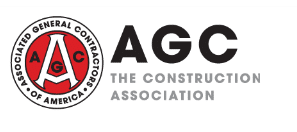North Carolina Construction News staff writer
Total construction spending increased by 0.3 percent in March as growth in manufacturing and education pulled up non-residential construction spending for the month, according to an analysis by the Associated General Contractors (AGC) of America.
Increases occurred during a time when most firms are struggling to find workers to hire.
“The manufacturing construction boom is really helping construction weather the softening residential and other non-residential markets,” said Stephen E. Sandherr, the association’s chief executive officer. “But even as overall demand continues to increase, most firms are having a hard time finding enough workers to keep pace with that demand.”
Construction spending, not adjusted for inflation, totaled $1.8 trillion at a seasonally adjusted annual rate in March, 0.3 percent above the February rate, which was revised down from the initial estimate a month ago. Spending on private residential construction decreased for the tenth consecutive month in March, by 0.2 percent. Spending on private nonresidential construction increased by 1.0 percent in March, while public construction investment rose by 0.2 percent.
Spending varied among large private nonresidential segments. The biggest component, manufacturing plants, jumped 4.6 percent compared to February. Commercial construction—comprising warehouse, retail, and farm construction—decreased 0.8 percent for the month. Power construction dipped 0.3 percent while spending on private office construction, including data centers, rose 0.3 percent compared to February.
Highway and road construction, declined 0.1 percent, while education construction grew 0.7 percent. Public spending on transportation projects fell 1.6 percent compared to February. Residential spending shrank due to a 0.8 percent contraction from March in single-family homebuilding. That outweighed an increase of 0.4 percent in multifamily construction for the same time frame.
Association officials attributed the lackluster infrastructure spending to the fact many now-funded projects are waiting for construction permits for activity to proceed. They urged Congress enact bipartisan permitting reforms to streamline bureaucratic reviews and curtail frivolous lawsuits aiming to delay or cancel projects. They also continued to urge federal officials to boost funding for construction training and education programs.
“The administration is beginning to realize that the permitting problems we have long warned about are real and holding up many of the projects they are eager to get started,” Sandherr said. “Streamlining the permitting process and investing in workforce development will open the spigot on projects and rebuild the talent pipeline for the workers to build that infrastructure.”

